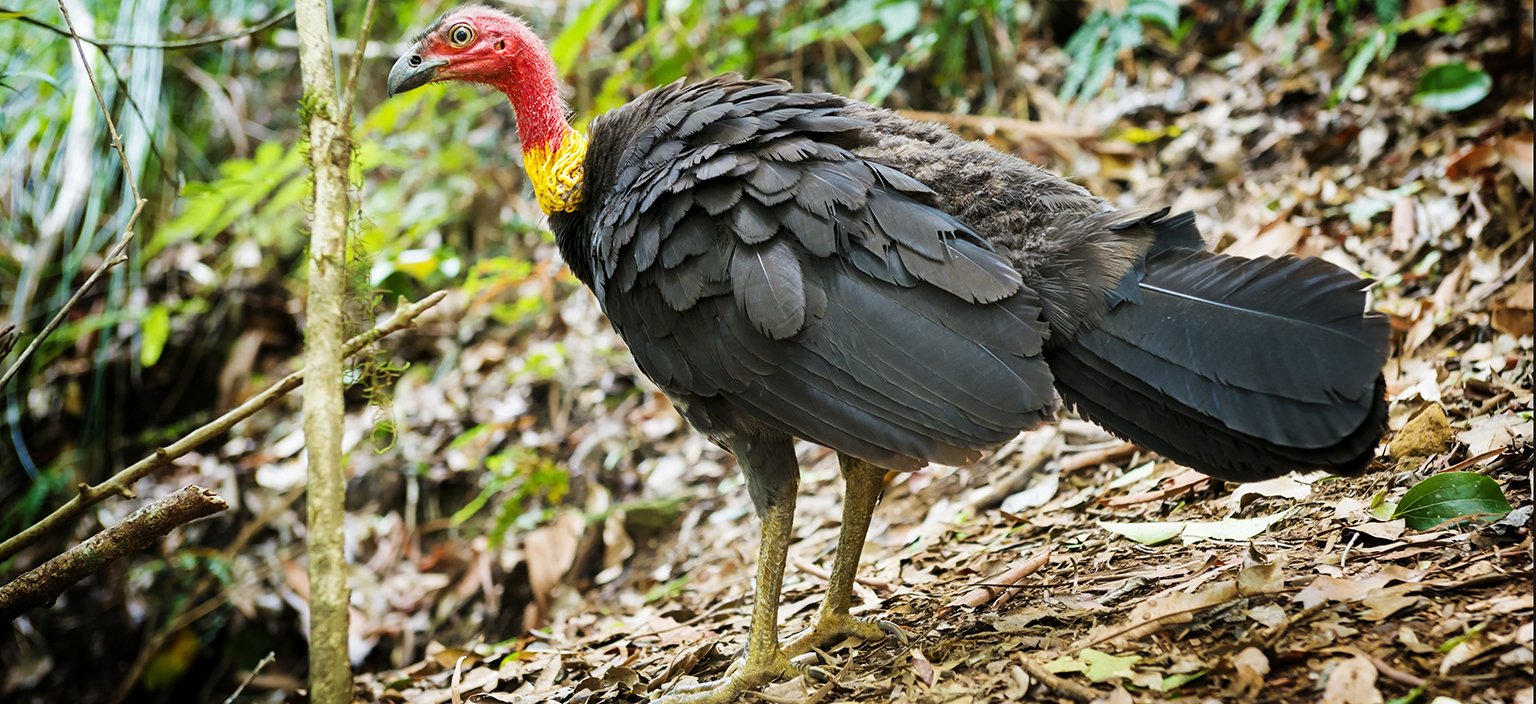
Brush Turkeys are ancient
Brush Turkeys play a vital role in Australia’s natural ecosystem.
They are the most ancient species in a family known as Megapodes. In many places in Australia, Brush Turkeys are totems for Aboriginal people. They also provided a food source during the Great Depression, which almost led them to be wiped out during the 1930s. Their numbers have now recovered and Brush Turkeys now live alongside people in our bushland reserves, parks and gardens.
Behaviour
The male Brush Turkey builds a mound of compost to attract a mate who will lay her eggs in the nest. These mounds need to heat to between 30-33 degrees Celsius for the eggs to properly incubate. While this process is underway, the male will tend to the mound to keep it at the right temperature. Once the chicks have hatched and the male has stopped tending his nest, the leftover mound is perfect compost for the garden as it contains organic matter that can improve water retention and nutrient content of soil.
To forage for food, they continually scratch and rake bushland looking for insects, grubs, seeds and fallen fruits. This aerates the soil supplying vital nutrients to the earth and stimulates the regeneration of native plants. Brush turkeys roost in groups in trees.
Living with Brush Turkeys
For more information about Brush Turkeys, including how you can deter them from building mounds in your garden, please see the NSW Department of Planning, Industry and Environment (DPIE) website.
